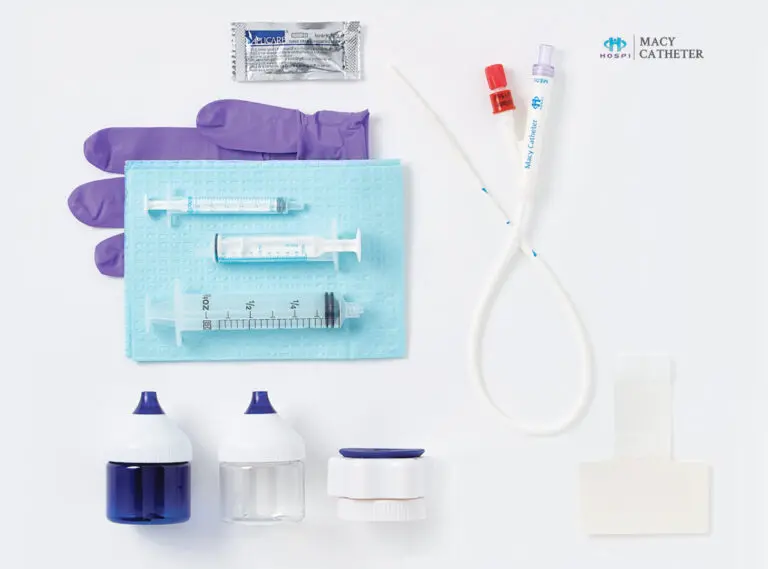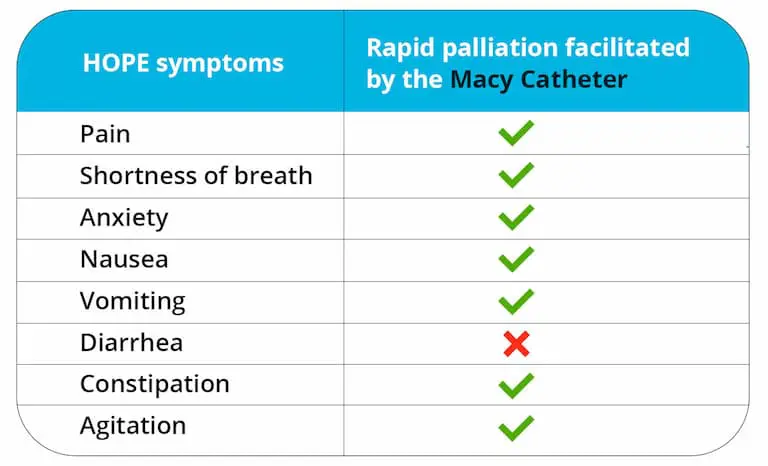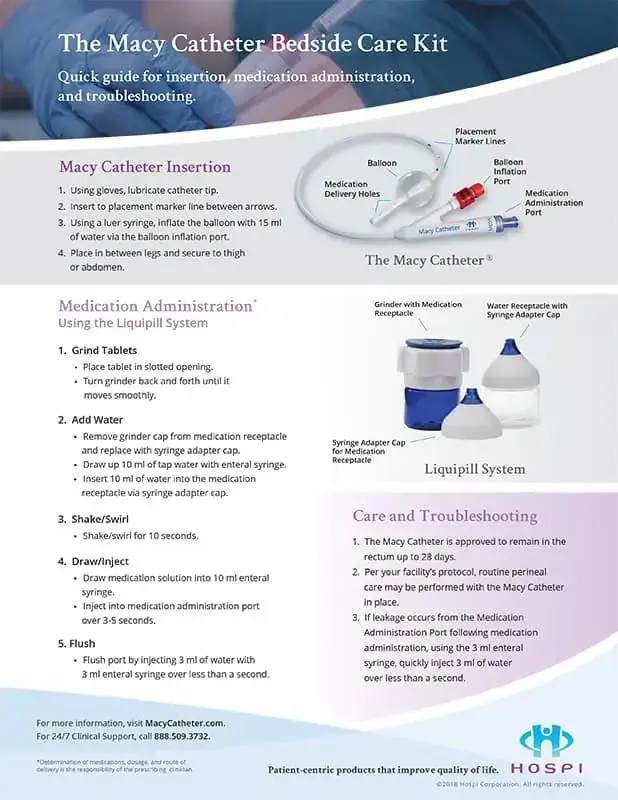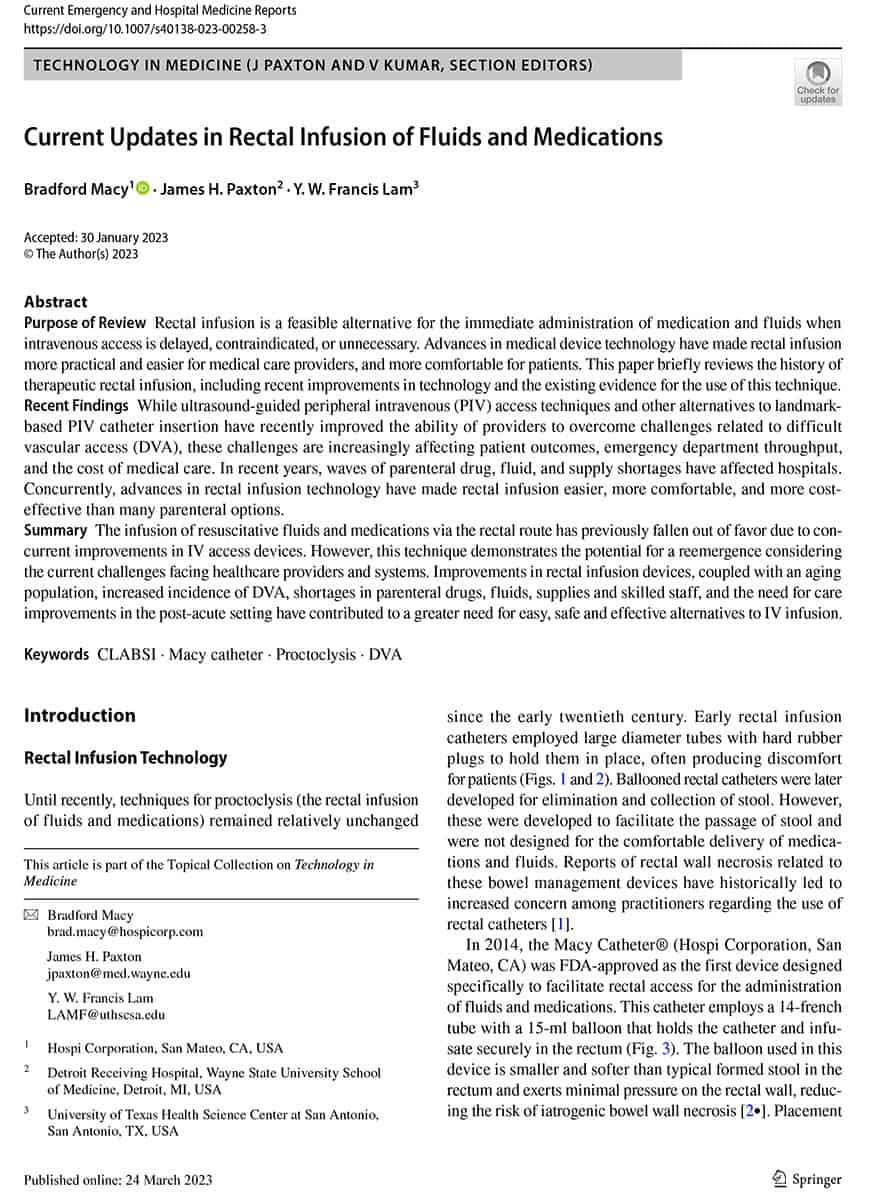Achieve palliation in a single, short visit using oral medications already at the bedside.
The Macy Catheter allows for continuation of oral solids and liquids already at the bedside when the oral route is either not possible or not working. Patients report relief within 15-20 minutes of receiving medications via the Macy Catheter.
When nurses arrive to a patient’s home, they deserve the tools they need to quickly get the patient’s symptoms under control and keep them controlled.
Nurses who have access to the Macy Catheter can reliably focus their time on what they do best: bring comfort and peace to patients and their families during a profoundly personal time.
In a video testimonial, hospice nurse Desiree Avilez, RN commended the Macy Catheter for supporting nurses at Hill Country Memorial Hospital: “The Macy Catheter has given us something to be proud of. The staff feels more empowered. There’s really no greater feeling a nurse can have than the feeling they get knowing they’ve provided the greatest level of palliation for their patients.”

Results: 2024 survey of 115 hospice nurses who have used the Macy Catheter
Q: How satisfied are you with your ability to meet the patient’s needs using the Macy Catheter?
A: 97.4% – very satisfied or satisfied

Q: How satisfied are you with the speed of symptom relief using the Macy Catheter?
A: 97.4% – very satisfied or satisfied

Q: How satisfied are you with the patient’s comfort after the Macy Catheter is in place?
A: 98.2% – very satisfied or satisfied

A Dignified Route
30-year veteran hospice nurse Brad Macy, RN, BA, BSN invented the Macy Catheter so patients could benefit from the clinical effectiveness of the rectal route without compromising dignity.
That’s why:
- The Macy Catheter is small and soft.
- The medication port is located on the thigh (patients don’t have to be disturbed).
- The Macy Catheter is indwelling and can remain inserted for 28 days.
Improving Quality of Life for an Ambulatory Patient in Rural Alaska
“I see so many nurses saying that they would never offer the Macy Catheter to their patient because they feel like it’s indignant. I get so upset because they don’t have a Steven and they don’t know what a difference it can make. Maybe my Steven story can make a difference to clinicians who don’t understand it yet.”
Joy Orr, RN
AdministratorAncora Home Health and Hospice | Wasilla, Alaska
How does it work?
Oral tablets or liquids, like the ones found in comfort kits, can be administered through the Macy Catheter with little or no lag time in managing symptoms.
After the initial insertion, which is painless, the catheter can be accessed by clinicians and caregivers without turning or moving the patient. The medication port is located on the patient’s thigh or abdomen. Liquid medications can be administered directly into the medication port. To administer solid medications, clinicians and caregivers crush and suspend the medications in a water solution using the LiquiPill system (included in the Bedside Care Kit) before administering them via the port using a 10ml syringe.

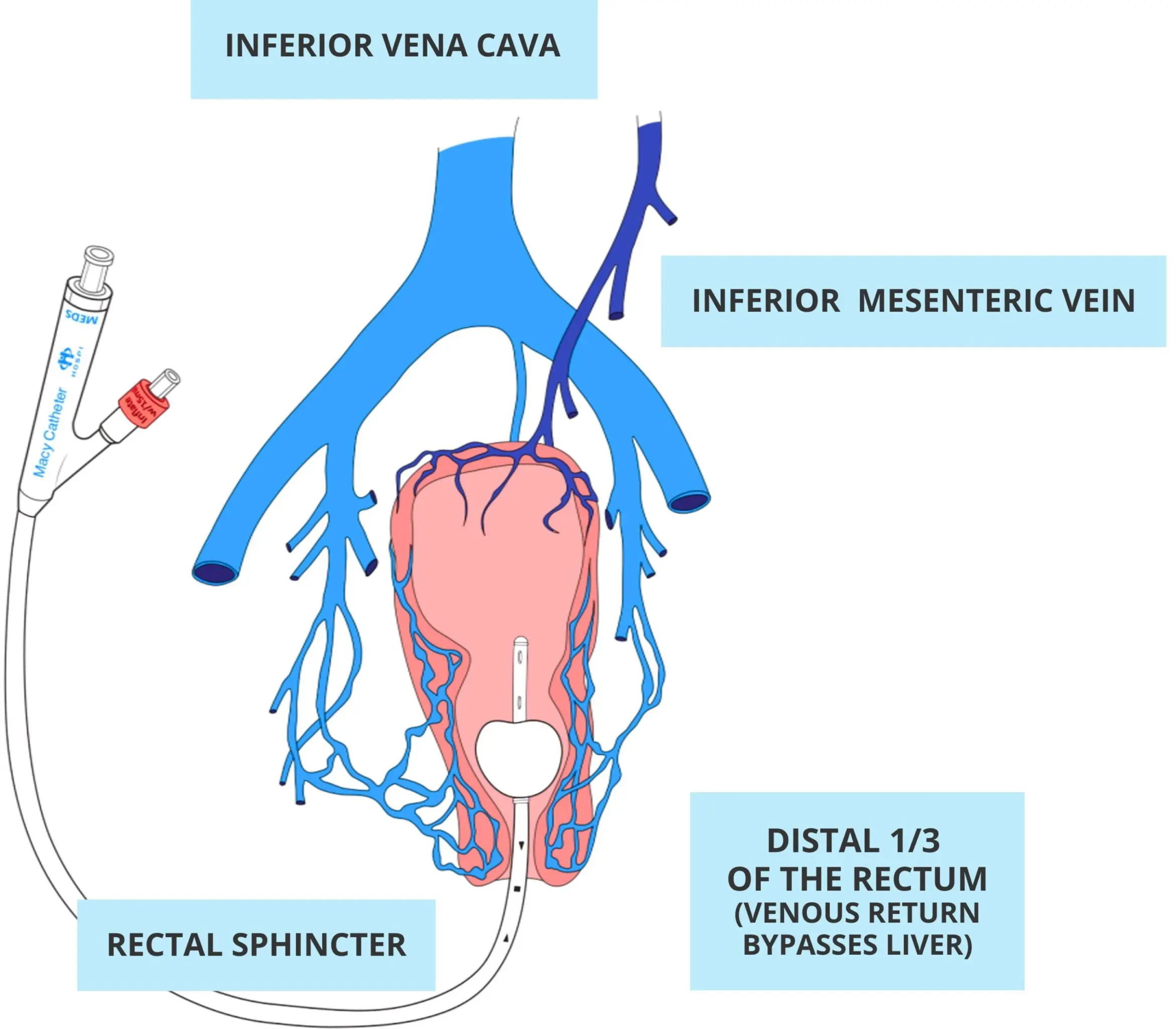
The Macy Catheter is positioned at the distal third of the rectal vault; the balloon is inflated just above the rectal sphincter. The rectal vault is very vascular, even at the end of life, and it contains a large number of absorptive cells in the lining.
Patients at the end of life have less or non-existent intake and are often dehydrated due to the nature of the disease process. This creates a dry environment in the rectal vault. In addition, blood is shunting to the core and away from extremities at end of life. The reduced reservoir of blood in the extremities can make subcutaneous injections much less effective and variable.
However, when medications are crushed and mixed with water to make a suspension and then administered directly into the dry rectal vault, medication absorption is rapid and effective.
With the Macy Catheter, the 10ml suspension of water and medication is absorbed like it was applied to a dry sponge and the medication readily enters the circulatory system via the highly vascularized mucosal tissues.
The Macy Catheter vs. Alternatives
Other methods of medication administration aren’t as reliable for nurses and their patients.
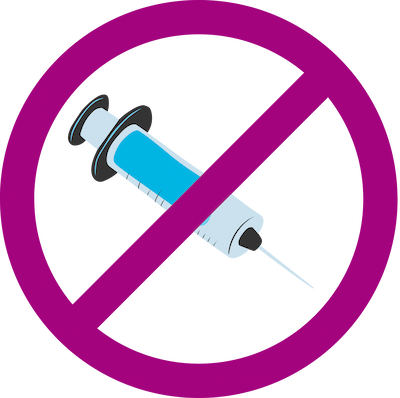
IV and SubQ
- Not always available to hospice patients (especially those in the home) due to drug shortages and difficulties related to accessing and maintaining the equipment
- Requires additional wait times due to the associated new medications, supplies, and deliveries
- Poses risk for infection
- Can be difficult for family caregivers to learn how to use
- Tethers patients to needles/lines, hindering embraces and ambulatory movement

Sublingual (when it fails to provide quick relief)
Symptom chasing with large, frequent doses of liquid medications…
- Is time-consuming and sometimes futile
- Can put patients at risk of aspiration

Transdermal
- Does not lead to effective symptom management most of the time
- Most drug molecules are unsuitable for systemic absorption
- Can be challenging to titrate
When is the Macy Catheter the right choice?
The Macy Catheter is ideal for rapid control of severe symptoms for complex patients.
The Macy Catheter allows for immediate utilization of oral medications already in the home or at the bedside. Because the medications that all hospices use as the patient begins to decline (ex. comfort kits) are immediate-release, the Macy Catheter can be used to administer them with no lag time in symptom relief onset.
The Macy Catheter is especially relevant when oral or sublingual medications do not quickly control a patient’s symptoms.
If a patient loses the oral route, mild or moderate symptoms can often be managed with the sublingual route. However, if the medication volume is too much for effective sublingual absorption or if the patient has heavy secretions, then the Macy Catheter is a logical alternative.
